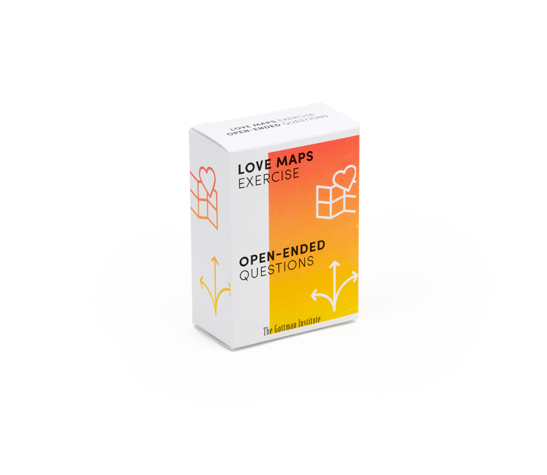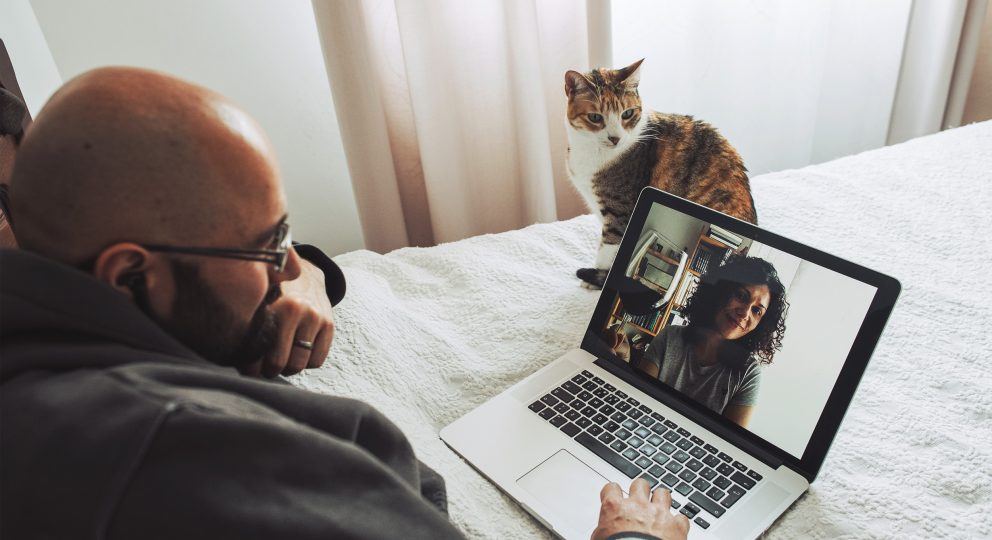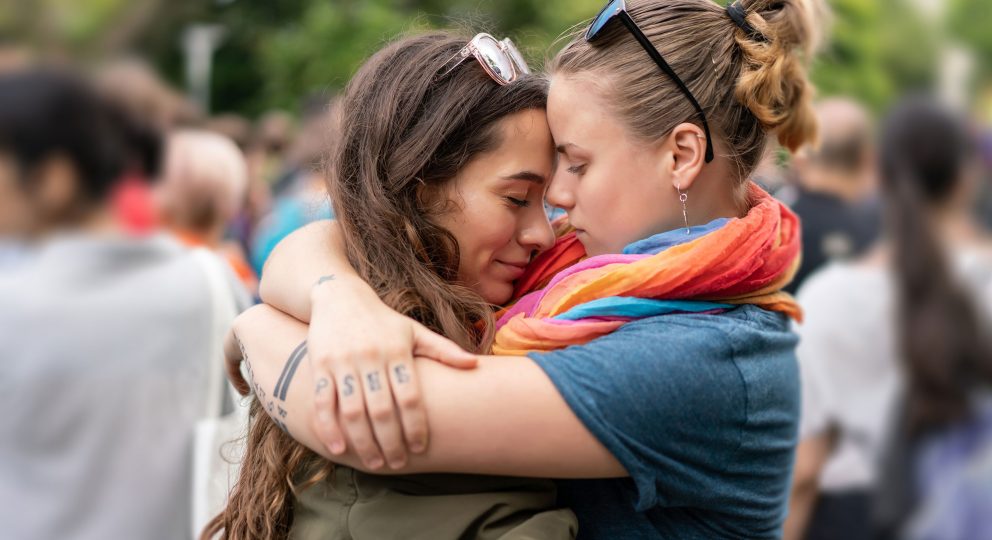By Eric Henley*
Editor’s Note: We’ve been studying relationships for the last four decades, but we still have so much to learn. Through the stories and experiences shared in Real Relationships, we aim to paint a more realistic picture of love in the world today. The views, thoughts, and opinions expressed in this article belong solely to the author, and are not necessarily based on research conducted by The Gottman Institute.
Shortly after my 24th birthday, I met Ken*, the man who would become my husband, for the second time. (The first time was at a house party in our freshman year of college, but that’s a different story.) I found him instantly charming, intelligent, and breathtakingly dashing. Six weeks later, I had it set in the back of my mind that I would probably marry this man. We moved in together later that year and were engaged before we reached our second anniversary. We had a stunning wedding in an urban warehouse with all of our closest friends and family, where we declared that we would put our love for one another first for the rest of our lives.
As we have built our lives together over the past decade, however, certain realities have risen to the surface. Ken had a very limited number of sexual partners prior to our getting together, and felt a desire to explore sides of his sexuality that I’m unable to provide him. In our early conversations, he expressed agitation around his limited sexual experiences. Meanwhile, I have slowly, hesitantly realized that I’m predisposed to polyamory: I feel my most fulfilled when I have the ability to explore deep emotional connections, up to and including love, with others.
There’s still a huge amount of stigma around open relationships and polyamory in America, and to this day my non-monogamy is something that I choose only to divulge strategically to specific close friends. Ken and I are concerned about how others may judge our decisions without knowing their broader context. I have had to find ways to balance my often big-hearted emotional responses with safety and security, for the health of our reputation. Needless to say, these changes didn’t happen without serious consideration of the broader repercussions invited by opening our marriage.
Several years ago—even before our wedding—we began exploring the possibility of an open relationship. I was raised believing that everyone has “the One,” so I was initially incredibly skeptical and did much to sabotage our earliest attempts. I struggled, at least at first, to see any potential lover of Ken’s as anything other than competition. In my mind, Ken was one good date (or sexual experience) away from coming to his senses and leaving me for someone far more interesting—why else would he want to pursue other people? My insecurities led to rash behavior. As Ken was walking out the door to meet a potential new sex partner for the first time, I had an emotional meltdown that forced him to cancel. I would stall with arbitrary rules one step shy of, “It must be a Tuesday in May and you must be wearing green socks.”
After all of that, however, it took just one statement to change my viewpoint, like the flip of a light switch. Ken said to me, “We have a house. We have a dog. I told everyone we know that I love you and commit myself to you first and foremost. I have five, 10, and 20-year plans with you. You’re in every version of my future, and anything else is a perk of living in an era where we are free to define our own relationships.” Ultimately, it was time to consider what I could stand to gain from an open relationship, and focus on recognizing my own value as a partner. I quickly went from being hesitant to enthusiastic.
As Ken and I have delved into the intricacies of ethical non-monogamy together, we’ve found what works for us, at least for now. Through our exploration, we have improved our communication, jump-started our sex life (with one another!), and opened channels that we believe will ultimately help our relationship endure. Here are five guiding principles that have steered our own ongoing conversations.
We Are Honest With Each Other, and Ourselves, About What We Want
When Ken and I first began discussing what an open relationship might look like for us, we decided to share what we each hoped to gain, then find a middle ground in the interest of “evenness.” Ken was more sexually motivated. As he expressed his desires, it became clear that he wanted to expand his boundaries, which included exploring different kinks in a space where he didn’t have to project an identity onto me. (He’s into older men, and as someone only six months his senior I don’t quite cut it.) I knew immediately that what I wanted was more complex than sex, and relied more heavily on an emotional connection. Rather than interrogate that thought process to determine what I wanted or needed from ethical non-monogamy, I rounded down to present a compromise. “How about we both have friends with benefits? Nothing random; we have to have met someone enough times to trust them and their respect for our marriage?”
The problem with this solution, of course, was that it didn’t scratch either of our itches. It resulted in both of us feeling frustrated and dissatisfied with the arrangement. Because we came to an agreement that left both of us unfulfilled, we found ourselves painted into a corner wherein, multiple times over the first couple of years, we had to revisit the conversation all over again. Ultimately, because we tried to find a middle ground and I wasn’t fully, radically honest about what I hoped to achieve, we weren’t able to set our rules accordingly. One of my mentors once told me, “A good team has no surprises,” and by failing to advocate for my needs and desires, Ken was faced with multiple surprises that led to undue tension.
I have discovered that there are nearly endless ways to build ethically non-monogamous relationships: one-time sexual flings, friends with “benefits,” friends with whom sex is just one of many shared activities, polyamorous romantic relationships, as well as queerplatonic/quasiplatonic relationships and asexual relationships. For us, our watershed moment was when we admitted to ourselves—and each other—what it is we each actually wanted from our open marriage. That allowed us to more clearly decide whether or not we wanted to proceed and, when we decided to do so, set the rules for how to go about it.
We Set the Rules, and Revisit Them Often
After Ken and I were able to identify what we hoped to gain from ethical non-monogamy, we went about the process of negotiating the rules that would dictate our outside interactions. This was an iterative process and continues to be to this day. The human experience is fluid, as are our feelings, emotions, and the states of our relationships. Accordingly, we decided that these rules must be revisited anytime we feel that one is no longer working for us. With time and comfort, many of our rules have been lessened or lifted. However, something that has been important to us is that any change in the rules is a deliberate, proactive decision (rather than a reactive bandage).
When it comes to the rules themselves, we have followed the lessons we learned in elementary school about good questions—always ask who, what, when, where, why and how. Below are a few of the questions we continue to ask ourselves in each category.
- Why: For us, the “why” was the radical honesty that we shared with each other previously. Because we’ve identified our desires, we’ve also identified our “why.”
- Who: Is anyone off limits? Are there disqualifiers for a potential partner? Are there criteria a potential partner needs to meet?
- What: Is safer sex required, and if so, what is our definition of safer sex? Are we allowed to explore kinks that we haven’t previously explored with each other? Is anything off limits and/or reserved only for one another? Since we were looking at polyamory, we also explored feelings on how we refer to additional partners, and limits around how far romantic expressions are allowed to go (gifts, etc).
- When: Can we forego time with one another to spend time with other partners? If so, how often and for how long?
- Where: Can we have other partners who live in the same city as us? Do the rules change when we’re on vacation together? Do the rules change when one partner is out of town, and if so how? Can we spend time with other partners in our home, or do we need to go elsewhere?
- How: Do we need to clear interactions with another partner first? Do we discuss interactions with other partners before or after-the-fact. Is there an abort/veto switch that can be pulled at any time, for any reason, without discussion in advance? If we have a veto, is that universal or just for specific types of relationships? How will we raise any future questions or concerns to one another in a safe and respectful way?
This may seem like a large number of questions, but this isn’t even an all-inclusive list. We have decided on answers for each of these questions in our own relationship, and that list has gone through several iterations. For example, we discuss any new partners before meeting up with them for the first time. What’s more, we have an automatic veto that we can use at any time (although it has yet to come up). When we have questions or concerns about the state of our relationship, we aim to bring them up immediately.
We are committed to safer sex (including Pre-Exposure Prophylaxis, or PrEP, a drug that greatly reduces the transmission of HIV). We have elected to always prioritize our relationship, meaning that instances in which we are forfeiting time with one another to talk to or meet other partners should always be the exception. We can spend time together in our home with other partners, but only after having had a conversation about it in advance.
And, because a good team has no surprises, I’ve had similar conversations with my current boyfriend, Harvey* and he, in turn, has had them with his husband.
We Never Say “No” (or “Yes”) Right Away
Something that we’ve learned as we live in our open marriage is that rules have exceptions, or sometimes we have failed to account for a potential situation. In these instances, we always strive to address the issue head-on as soon as we become aware of it. This protects our relationship and the hard work we’ve put into crafting the non-monogamous portions of it.
We have learned the hard way that questions, especially those pertaining to changing or bending the rules, are almost never as straightforward as they seem. First off, there is always a degree of nuance and timing, and our first reactions are very rarely how we truly feel. Just recently, I made the mistake of asking Ken if Harvey could stay with us during an upcoming five-day period just minutes after he had told me he was really hungry. This was a conversation I had been slightly nervous about, as it didn’t fall neatly into any of our previous discussions, but my timing left much to be desired. The answer was a curt bark: “I don’t know! Why are we talking about this right now?!” After lunch, he was much more open to our conversation.
There are other factors that we’ve found can influence how we feel in a given moment. Over time, we have identified additional things to pay attention to like how things are going in our relationship, how things are going with our outside partners, the time of day, how work went that day, and whether or not we’ve been actively discussing other parts of our relationship.
The other consideration we must weigh is whether or not the change will lead to a slippery slope. Perhaps a rule change makes sense for a specific person, or interaction, but wouldn’t make sense as a long-term change for the health of our relationship. There can also be unintended consequences. In the case of Harvey staying with us, questions such as “How will Ken feel? What will Ken do if we want to be alone? Are there rules we need to set for that visit?” had to be considered before we could fully come to an agreement.
As a good rule of thumb, we have decided to come back to major conversations after at least a couple of hours (if not a day or two) to ensure our thoughts and reactions are balanced and clear.
We’ve Decided What is “Need to Know”
One of our biggest ongoing conversations has pertained to how involved we each want to be with our other relationships. Because our “whys” are different, we’re engaged in different types of relationships, and therefore the questions we’ve had to ask ourselves differ.
The first major question we had to ask ourselves is how involved we’ve wanted to be with each others’ partners. For Ken, that has meant asking himself questions around his relationship with my boyfriend(s) or partner(s).
- Does he want to be friends with them?
- Does he want to be friends with my metamour (my other partner’s partner(s))?
- Is he okay if I become friends with my metamour?
- How will he feel and what will it look like when Harvey visits? Will he steer clear or spend time with us together?
The other major pre-emptive communicative item we’ve both had to ask ourselves is whether or not we want to have details on the relationship(s) we have with others, sexual or romantic. Examples might include:
- Do we want to be informed when a sexual interaction happens, and if so, in how great of detail?
- Do we want to be in-the-know on big events in our partner(s) lives that may trickle into Ken and me’s relationship?
- Do we want to be made aware of milestones, such as anniversaries, saying “I love you,” and other events that would be celebrated or acknowledged if the same event were between Ken and me?
We’ve elected to be hyper-communicative in our relationships, but many couples elect to act on a “need to know” basis, which is a valid choice that we have discussed at length. Ultimately, we struggled to identify what kind of information would fall under the “need to know” category, and foresaw that it could lead to having far more reactive conversations, so decided against it.
We Are Having Fun
After reading all of the above, you might be thinking to yourself, “Eric, that seems like an awful lot of work.” Well, you’re correct. It is ongoing, sometimes uncomfortable work that at times we engage in daily, and other times weeks will pass without conversation. But, more importantly than that, we are having a lot of fun.
Not unlike traveling, we’ve had the opportunity to see and experience so many new and foreign things by building a foundation of trust and then crafting our open marriage on top of it. We have gotten to experience the rush of new relationship energy, new things that turn us on (that we can then bring back to each other), and together, we’ve pushed our boundaries further than I ever would have alone.
***
As someone who always believed in the One, there were years where I struggled to reconcile my burgeoning feelings and Ken’s desires. Part of our exploration, as a couple, has been (and continues to be) how we show up as loving and committed partners every day when some of our actions may be seen as the opposite. We have had to specifically define what it means for us to have a rich, fulfilling and communicative marriage. We’ve thrown out rules and norms that we grew up with—and see our friends, family, and society living with every day—to mold what our relationship will look like.
It has often been difficult and as we navigate the complexities of day to day life, we continue to have disagreements that force us to evaluate the rules and further define our path forward. But as we have built this life together, one thing is certain: Ken is my One, first and foremost, and it just so happens we’re in an open marriage.
*Some names and identifying details have been changed to protect the privacy of individuals.
How do you navigate identity within a relationship? Is your relationship unique because of shifting identities? We want to hear from you! Click here to share your real relationship story.










